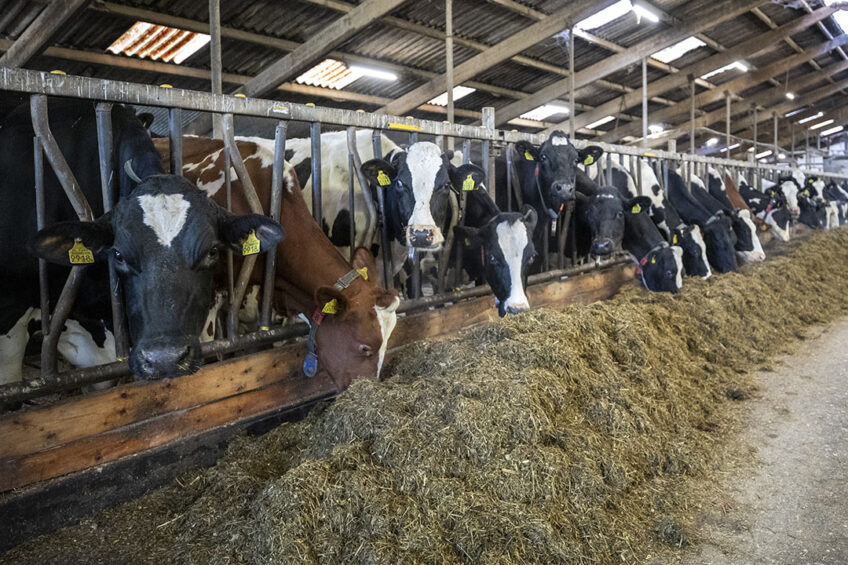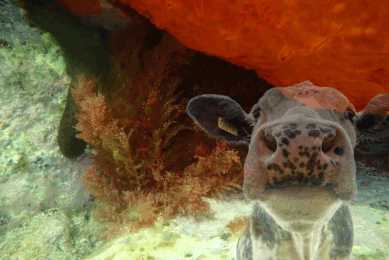Application of rumen modifiers in dairy cow nutrition

Using rumen modifiers in dairy cow diets can improve feed efficiency, gut health and lower rumen methane production. In this article various rumen modifiers are discussed.
Increasing starch in dairy cow diet provides energy for milk production, increases the rumen-degraded starch supply to ruminal microbiota and reduces the risk of subacute ruminal acidosis. However, this process lowers the efficiency of microbial protein synthesis, neutral detergent fibre degradability, and milk fat percentage. These negative effects can be minimised by using rumen modifiers in dairy cow diets which optimise fibre degradation and the efficiency of microbial protein synthesis, thus decreasing negative environmental impacts.
MODIFIERS MANIPULATING RUMEN FERMENTATION
 Probiotics
Probiotics
Megasphaera elsdenii, the lactilytic group of Selenomonas ruminantium, and Coprococcus catus are important lactate consumers producing acetate, propionate, and butyrate.
Fibrobacter succinogenes is a cellulolytic bacterium producing succinate and Selenomonas is a succinolytic bacterium that helps fibre degradation by alleviating succinate accumulation and thermodynamic inhibition of succinate production.
Bifidobacteria stabilises the rumen under acidic conditions, by interacting with the epimural bacteria in the rumen epithelium.
Supplementing fumarate prevents downswings in ruminal pH, improves the efficiency of lactate fermentation to propionate, and decreases inhibition by accumulated lactate.
 Live yeast and yeast extract
Live yeast and yeast extract
Live yeast and yeast extract optimise fibre degradation and improve dry matter intake. Oxygen scavenging by live yeast that congregates to newly ingested feed benefits colonising fibrolytic bacteria.
Extract collected from live yeast stimulates lactate fermentation to help maintain pH and stimulates the growth of Selenomonas, Ruminococcus, and Fibrobacter strains. In addition, yeast extract stimulates expression of transporters in the rumen epithelium, increases the rate of volatile fatty acid absorption, thus enhancing ruminal pH.
Yeast extract improves feeding frequency and milk fat synthesis, decreases rumination bouts, increases gut barrier function for competitive exclusion of pathogens, and reduces the efficiency of nutrient usage.
Supplementation with live yeast or yeast extract in the dry period predisposes transition dairy cows to inflammation, decreases the subsequent inflammation response that spikes after calving, and lessens the leakage of bacterial endotoxin into blood and the subsequent systemic immune response.
MODIFIERS SUPPRESSING METHANE PRODUCTION
 Feeding nitrate
Feeding nitrate
Nitrate has a strong potential to lower methane production in dairy cows, although assimilation of nitrate into microbial protein must be considered to prevent excess nitrogen excretion in urine. On the other hand, lactilytic strains of bacteria such as Selenomonas in the rumen reduce nitrate or nitrite.
In addition, increasing dry matter intake reduces the antimethanogenic response of nitrate, whereas the use of slow-release nitrate sources fed to cows at lower dry matter intake may enhance this response. Supplementing a strain of Paenibacillus as a nitrite-using probiotic prevents nitrite accumulation when nitrate is fed.
 3-Nitrooxypropanol
3-Nitrooxypropanol
Increasing dietary neutral detergent fibre decreases the efficacy of 3-Nitrooxypropanol, an organic compound, in order to suppress methane production. Reducing concentrations from approximately 50% to 30% of the diet by replacing corn and grass silages decreases the persistence of methane abatement.
3-Nitrooxypropanol has minimal negative effects on palatability, dry matter intake, and milk quality while supporting its efficacy to suppress methane production by 25 to 30%. Various research studies show conflicting results regarding the effect that 3-Nitrooxypropanol has on fibre digestibility. In addition, 3-Nitrooxypropanol increases mammary synthesis of fatty acids, thus influencing energy partitioning between adipose and mammary tissues.
 Red seaweed
Red seaweed
Seaweed is a macroalgae grouped into brown, green, or red seaweed. However, red seaweed, particularly the genus Asparagopsis and the species Asparagopsis taxiformis has the potential to suppress methane production, and to inhibit bacteria and protozoa growth. Red seaweed supplementation improves milk or milkfat production without depression in dry matter intake. However, it is important to figure out how to maintain sustainable seaweed farming and to address issues such as the marine and land environments, product regulation, and animal and human safety.
MODIFIERS IMPROVING GUT HEALTH OR FEED EFFICIENCY
Lactate-producing bacteria
Administering lactate-producing bacteria maintains a healthy hindgut by inhibiting potential pathogens such as Escherichia coli. In addition, lactate-producing bacteria have the potential to decrease methane production. Although, it is important to note that these probiotics may only be supplemented when there is no risk of subacute ruminal acidosis. Furthermore, combining lactate-producing bacteria with lactilytic probiotics is more effective in suppressing methane production.
Ionophores
Ionophores improve feed efficiency, increase propionate production while inhibiting lactate-producing bacteria and other bacteria that enhance proteolysis and deamination. Increasing the ionophores dosage reduces the acetate to propionate ratio, decreases dry matter intake, thus suppressing methane production. Increasing propionate reduces the risk for ketosis, stabilises ruminal fermentation, and improves nitrogen and energetic efficiency.
Branched-chain volatile fatty acids
Some prominent cellulolytic bacteria in the rumen require branched-chain volatile fatty acids to increase milk production, to improve feed efficiency, and to enhance the degradability of neutral detergent fibre. In addition, the branched-chain volatile fatty acids increase dry matter intake and help prevent milk fat depression by stimulating milk fat synthesis in the mammary gland. Supplemental valine, which degrades to isobutyrate stimulates milk production and increases the blood thyroxine concentration.
 Plant components and extracts
Plant components and extracts
Various plant components and extracts suppress enteric methane production by preventing methanogens and decrease protein wastage by inhibiting ruminal protozoa and the bacteria that rely on amino acids as energy sources. However, microbes appear to adapt to many of the plant bioactive compounds by changing the architecture of their cell wall. Tannins, a plant bioactive compound, decreases protein degradability in the rumen, and the intestinal digestibility of rumen undegradable protein. Feeding saponins decreases dry matter intake.
Concluding remarks
Rumen modifiers improve feed efficiency and decrease rumen methane production with less risk for decreased milk or milk fat production. However, rumen modifiers are no substitute for proper feeding management. Rumen modifiers include supplements that manipulate rumen fermentation, supplements that suppress methane production and supplements that improve gut health or feed efficiency. It is important that any supplement that is not generally recognised as safe needs to pass safety tests appropriate for the country in which they are marketed. In addition, further studies are required to evaluate combinations of supplements to improve the consistency of effectiveness.











